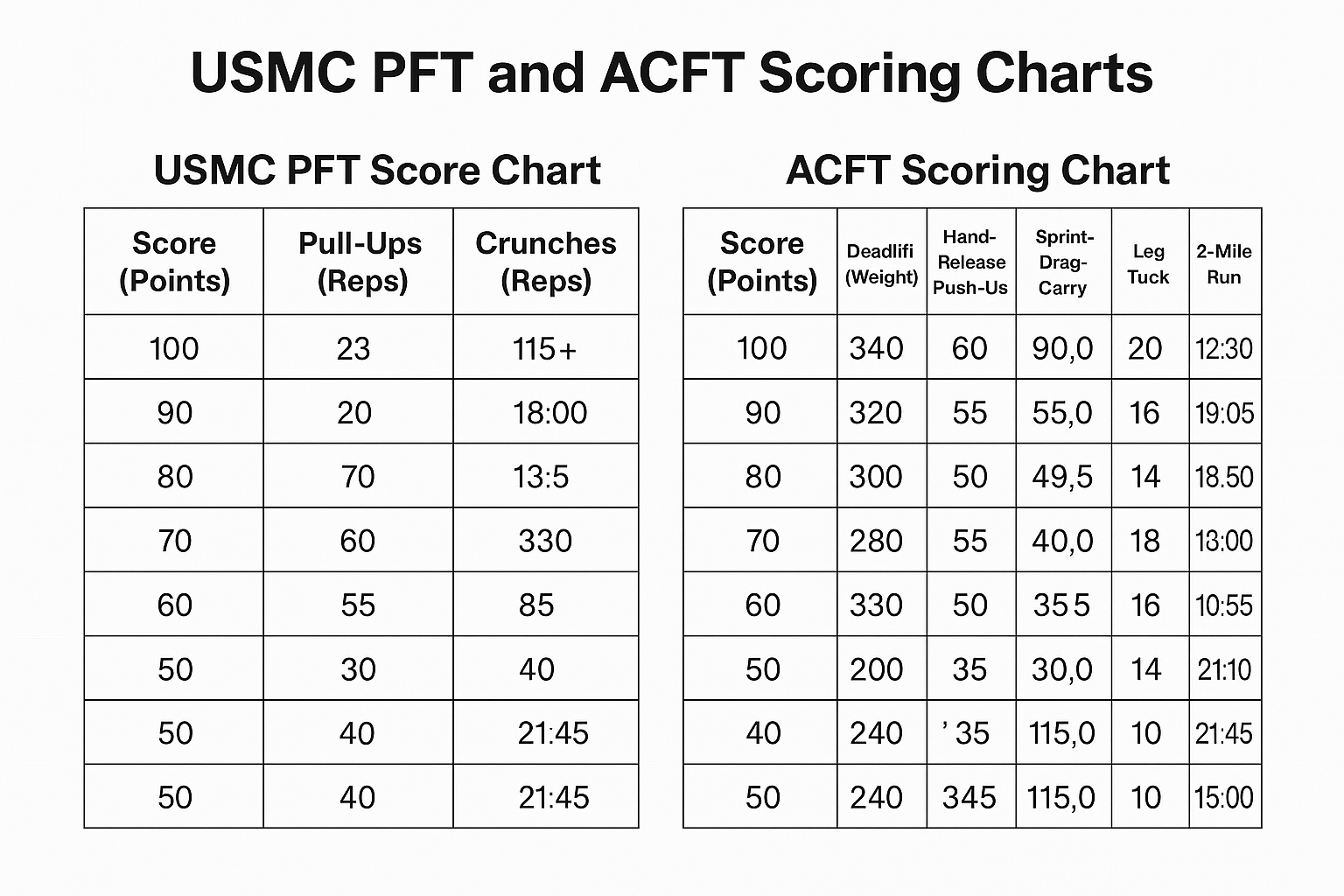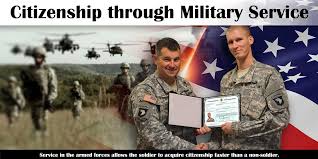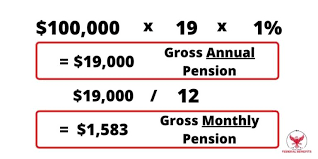USMC PFT and ACFT Scoring Charts
Military fitness tests are essential benchmarks that ensure service members are prepared for the physical demands of their duties. Two of the most widely discussed assessments today are the USMC Physical Fitness Test (PFT) and the Army Combat Fitness Test (ACFT). While both tests have unique components and scoring systems, they share one common goal: to ensure that our military personnel are physically ready for the rigors of combat and daily duty.
USMC Physical Fitness Test (PFT) Score Chart
The USMC PFT is structured to measure upper-body strength, core endurance, and aerobic capacity. The test usually includes three primary events:
- Pull-Ups (or Push-Ups as an alternative for certain candidates)
- Abdominal Crunches
- 3-Mile Run
Each event is assigned a maximum of 100 points, and a candidate’s final score is a combination of these three events. Below is an example of a USMC PFT scoring chart with sample performance metrics. Note that the exact numbers may vary based on periodic updates to test standards, but this chart provides a general guideline.
Example USMC PFT Score Chart
| Score (Points) | Pull-Ups (Reps) | Crunches (Reps) | 3-Mile Run Time (min:sec) |
|---|---|---|---|
| 100 | 23+ | 115+ | 18:00 or faster |
| 90 | 20 | 100 | 18:45 |
| 80 | 17 | 85 | 19:30 |
| 70 | 14 | 70 | 20:15 |
| 60 | 11 | 55 | 21:00 |
| 50 | 8 | 40 | 21:45 |
Key Points to Consider for the USMC PFT:
- Pull-Ups/Push-Ups: Quality of form is essential. While pull-ups are preferred for scoring, candidates who are unable to complete a pull-up may often have the option to perform push-ups, which are then scored on a comparable scale.
- Abdominal Crunches: Efficiency and consistency in maintaining form throughout the exercise ensure maximum scoring potential.
- 3-Mile Run: Aerobic capacity is measured by the time taken to complete the run. Faster times yield higher scores; however, candidates must balance speed with proper pacing to avoid premature fatigue.
U.S. Marine Corps PFT Standards and Info
ACFT Scoring Chart
The ACFT is designed to reflect the physical demands of modern combat and is comprehensive in scope. It includes six events that together evaluate strength, power, agility, and endurance:
- Maximum Deadlift
- Standing Power Throw
- Hand-Release Push-Ups
- Sprint-Drag-Carry (SDC)
- Leg Tuck (or an alternate core exercise)
- 2-Mile Run
Each event is scored on a scale from 0 to 100, leading to a maximum possible score of 600 points.
Example ACFT Scoring Chart
| Score (Points) | Deadlift | Standing Power Throw | Hand-Release Push-Ups | Sprint-Drag-Carry | Leg Tuck | 2-Mile Run |
|---|---|---|---|---|---|---|
| 100 | 340 lbs or more | 12.5+ feet | 60+ reps | 90.0 sec or less | 20+ reps | 12:30 or faster |
| 90 | 320 lbs | 12.0 feet | 55 reps | 95.0 sec | 18 reps | 13:00 |
| 80 | 300 lbs | 11.5 feet | 50 reps | 100.0 sec | 16 reps | 13:30 |
| 70 | 280 lbs | 11.0 feet | 45 reps | 105.0 sec | 14 reps | 14:00 |
| 60 | 260 lbs | 10.5 feet | 40 reps | 110.0 sec | 12 reps | 14:30 |
| 50 | 240 lbs | 10.0 feet | 35 reps | 115.0 sec | 10 reps | 15:00 |
Key Points to Consider for the ACFT:
- Deadlift: Measures overall lower-body strength. As the weight lifted increases, so does the score.
- Standing Power Throw: Assesses explosive power and coordination. Longer throws result in higher scores.
- Hand-Release Push-Ups: Focus on upper-body endurance. Proper form and range of motion are critical.
- Sprint-Drag-Carry: This event tests agility, anaerobic capacity, and overall functional fitness. Speed and efficiency in transitions can boost your score.
- Leg Tuck: Evaluates core strength and upper-body control. Some alternatives (like a plank) are available depending on the soldier’s circumstances.
- 2-Mile Run: Similar to the USMC 3-mile run but shorter in distance, it tests cardiovascular endurance. Faster completion times correlate with higher scores.
Final Thoughts
Both the USMC PFT and the ACFT are rigorous assessments designed to ensure that our military personnel maintain the peak physical condition necessary for duty. Although they have different structures and performance metrics, the underlying goal is to push service members to excel under physically demanding conditions. By understanding these scoring charts, candidates and trainers can better prepare and target training to meet or exceed the established standards.
Staying informed about the latest standards and regularly practicing the specific events can significantly enhance performance in these tests. Whether you are preparing for the Marines or the Army, knowing the metrics for success is the first step toward improving your overall fitness and readiness.







